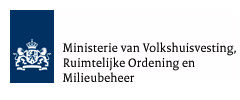Natural disasters and gender
A university report states that women are more affected by natural disasters
24.10.2005 |Sascha Gabizon
This commentary originally appeared in the Chicago Tribune, September 14, 2005.
As the media coverage of the disaster in New Orleans swung into high gear, reporters started to notice the racial dynamics of Hurricane Katrina's aftermath.
In the tone of this discovery there was something of the quality of Captain Renault in "Casablanca" who was "shocked, shocked" to find gambling in his fine establishment; in point of fact, it would have been extremely difficult not to notice that the dead, the dying, and the desperate on the streets of New Orleans were African-American.
Nonetheless this enlightened "noticing" by the media produced a moment of genuine inquiry as reporters and analysts started asking tough, targeted questions about why this disaster fell so hard on one side of the race line. African-Americans make up about 68 percent of the population of New Orleans, and it appears from the media coverage that they represent a considerably higher proportion than that of the survivors who were trapped inside the city, perhaps as high as 80 percent.
And yet there is another equally important and starkly apparent social dimension to the hurricane disaster that media coverage has put in front of our eyes but that has yet to be "noticed": This disaster fell hard on one side of the gender line too. Most of the survivors are women. Women with children, women on their own, elderly women in wheelchairs, women everywhere--by a proportion of what looks to be again somewhere around 75 or 80 percent.
Women make up 54 percent of the population of New Orleans, so the gender gap is even more dramatic than the race gap. The two gaps need not compete for our attention; they are linked. The majority of victims trapped in New Orleans appeared to be African-American women with their children, and no doubt the ranks of the dead also will be.
The gender gap is no surprise, or shouldn't be. Disaster is seldom gender neutral. In the 1995 Kobe, Japan, earthquake, 1.5 times more women died than men; in the 2004 Southeast Asia tsunami, death rates for women across the region averaged three to four times that of men.
The gender, class and race dimension of each disaster needs particular explanation. Feminists working in relief agencies and the UN, for example, identified several factors that explain the gender skew in the 2004 tsunami deaths.
In some instances, sex differences in physical strength clearly made a difference in the ability of survivors to climb, cling or run to safety. Prevailing ideologies of femininity played a role in this: strength differences reflect the extent to which women are encouraged or allowed to develop physical strength.
Roles make a difference
Notions about appropriate roles and jobs for men and women determined where men and women were located, literally, in relation to the waters; in many places, women were in homes in harm's way while men were at jobs in places away from the coast. This division of labor seemed particularly important in explaining survival rates: In a fast-moving storm surge, mothers who stop to gather children lose valuable time, and with children in their arms they can't swim, climb or hang on.
Experience from these and other crisis zones allows us to start to explain the gendered nature of the New Orleans disaster. The biology and ideology of physical strength may turn out to play as much a role in the gender-skewed survival rates in this hurricane as they did in the tsunami.
More women in poverty
Additionally, we know that the poverty that leaves people more vulnerable to disaster amplifies gender as surely as it does race. Indeed, everywhere in the world women are the poorest of the poor. In New Orleans, a city with a poverty rate higher than the national average--15 percent of all families live below the official poverty line--41 percent of female-headed households with children fall below this line.
People living in poverty are the least likely to have access to good information ahead of disaster, the least likely to have a place they can go to and stay for days or weeks, and the least likely to have the means to leave.
In the days ahead of the storm, a lot of people did get out of New Orleans, almost all of them by car. Poverty combines with ideologies about gender to produce a measure of deep disadvantage in terms of mobility: Even in a country as awash in cars as the United States, women are less likely to have a car or driver's license than their male counterparts. Of all Americans, it is poor women who are the least likely of all to have a car or access to one.
International disaster and refugee agencies have been profoundly influenced by feminist insights into the importance of the gender dynamics of disaster. From Oxfam to the UN High Commission on Refugees, experts now routinely incorporate the understanding that disasters magnify gender disadvantage, that women and their children have specific postdisaster recovery needs, and that preparations for gender-specific emergency intervention and recovery are integral to disaster planning.
Knowledge is lacking
This knowledge appears to have entirely bypassed American commentators, planners and media.
The "not noticing" of the gendered dimensions of this disaster by the American media and by the experts who interpreted the disaster to the public through the media is alarming and warrants attention.
Feminist theorists have long pointed to the public invisibility of women, especially women of racial minorities, and the New Orleans case study provides a dramatic example of the "unremarkability" of racialized minority women in the gaze of a predominantly male and white media. In the real world of an unfolding disaster, this comes at a price.
The lack of curiosity about the rapes in the midst of the New Orleans disaster is just one aspect of this willful ignorance that is particularly disturbing.
Rapes have been mentioned in several news stories, but always in passing and with no follow-through: no interviews with police officials about the magnitude of rape, no curiosity about the nature of masculinity that contemplates rape even in conditions of extreme human suffering, no disaster experts assuring us that rape-support teams are included in the rescue teams, no discussion about the medical and psychological resources that women who have survived unimaginable tragedy and stress and have also been raped will need.
Beyond nature
Media commentators and politicians insist on referring to this as a natural disaster. There's a certain comfort and perhaps political cover in that designation, but experts eschew this term. The hurricane came ashore, but from then on it has been a human disaster. The gendered character of this disaster, and the silence about it, also is more artifice than nature.
A 2005 Oxfam report on the Asian tsunami reminds us that "disasters, however `natural,' are profoundly discriminatory. Wherever they hit, pre-existing structures and social conditions determine that some members of the community will be less affected while others will pay a higher price. Among the differences that determine how people are affected by such disasters is that of gender."
At some point in the New Orleans disaster, this will be officially "noticed," but the costs of not paying attention to the gendered divide earlier in the disaster will be high for the women whose needs have gone unnoticed and unaddressed.
Another article by the gender and disaster expert Elaine Enarson is to be found here.

































